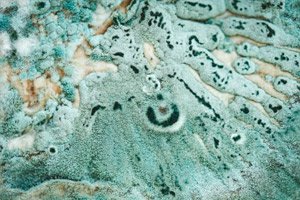
All iLive content is medically reviewed or fact checked to ensure as much factual accuracy as possible.
We have strict sourcing guidelines and only link to reputable media sites, academic research institutions and, whenever possible, medically peer reviewed studies. Note that the numbers in parentheses ([1], [2], etc.) are clickable links to these studies.
If you feel that any of our content is inaccurate, out-of-date, or otherwise questionable, please select it and press Ctrl + Enter.
Duo of membrane-slicing fungal proteins linked to respiratory allergies
Last reviewed: 09.08.2025

Scientists at the National Institute of Biological Sciences in Beijing report that two pore-forming proteins from the common mold Alternaria alternata puncture airway epithelial membranes and trigger signals that lead to allergic airway inflammation.
Allergens that trigger type 2 immunity—such as dust mites, pollen, and mold spores—are structurally similar to one another. Pattern-recognition receptors deal with bacterial and viral threats, while type 2 responses appear to detect tissue damage.
The MAPK signaling pathway acts as a molecular switchboard inside epithelial cells, translating external stress into gene-level commands. The cytokine IL-33 is an “alarm signal” that is normally stored in the nuclei of airway cells but is suddenly released when membranes are damaged, recruiting innate immune cells and directing a response. In allergic airway inflammation, MAPK activity amplifies the programs initiated by IL-33, placing both of these molecular components at the center of the inflammatory process.
In the study, “Epithelial cell membrane perforation induces allergic airway inflammation,” published in Nature, the scientists developed a strategy to purify and recreate the system to test whether fungal proteins could trigger type 2 inflammation through epithelial recognition mechanisms.
Human lung epithelial cell lines and repeated intranasal administration of proteins to mice were used as experimental models, monitoring early activation by IL-33 release, MAPK phosphorylation and inflammation-related gene expression.
The researchers found two proteins from the mold Alternaria alternata, called Aeg-S and Aeg-L, that work together to puncture the membranes of airway cells. Microscopic images show them linked together in a ring-shaped “drill” structure. At low doses, calcium enters the cells and triggers the MAPK cascade; at higher concentrations, the cells break down and release the “alarm” IL-33. Neither protein is active alone.
Blocking calcium entry or inhibiting the MAPK cascade completely stops all subsequent reactions. Inhaling a pair of proteins in mice causes classic signs of allergy: accumulation of eosinophils in the lungs, activation of T-helper 2 cells, and a sharp increase in IgE levels, while mold lacking one of the proteins does not provoke inflammation of the respiratory tract.
Six structurally unrelated pore-forming toxins—from fungi, bacteria, annelids, and cnidarians—induced similar changes in epithelial and immune responses when inhaled, including IL-33 release and MAPK activation in epithelial cells even without IL-33 feedback.
The findings suggest that membrane perforation is recognized by the body as a danger signal and is sufficient to trigger type 2 immune pathways in the airway epithelium. The authors suggest that many seemingly unrelated allergens and venoms contain pore-forming proteins, and that perforation may explain why such diverse stimuli cause similar airway inflammation.
